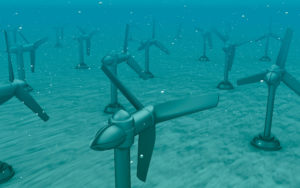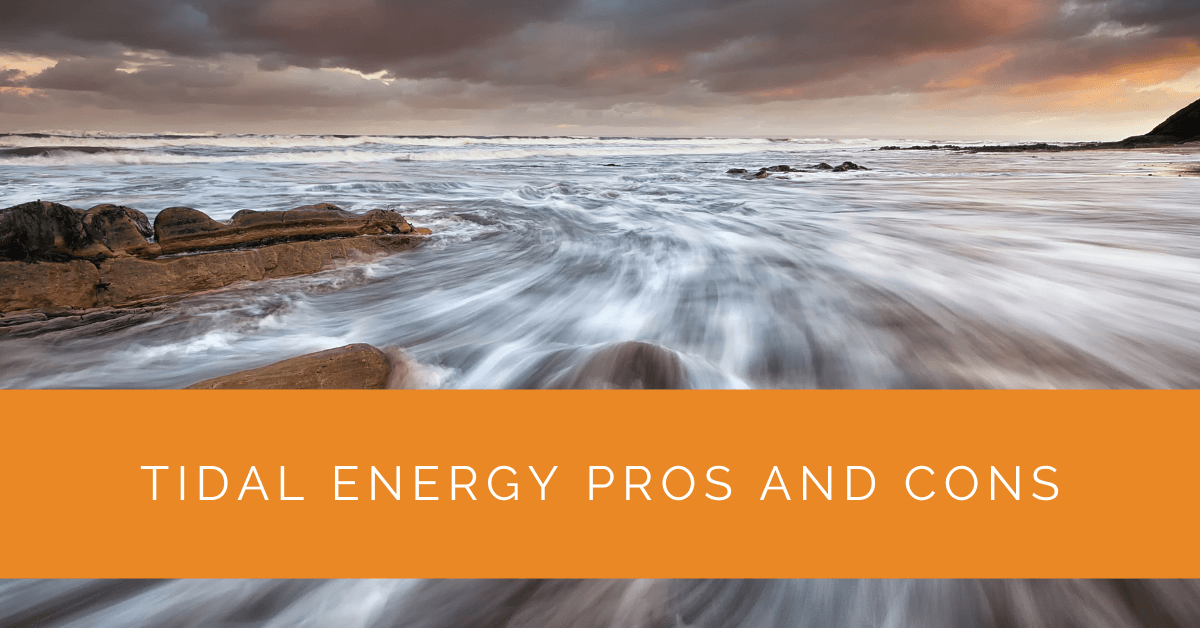Tidal energy, a fascinating form of renewable energy, harnesses the immense power of ocean tides to generate electricity. This clean and sustainable energy source capitalizes on the gravitational forces of the moon and the sun, which create the rise and fall of tides in coastal areas and estuaries. Understanding the principles behind tidal energy and its innovative technologies is key to appreciating its potential to revolutionize our energy landscape.
Contents
- 1 Key Takeaways
- 2 How Tidal Energy Works
- 2.1 Clean and Renewable Energy Source
- 2.2 Predictable and Reliable
- 2.3 Minimal Environmental Impact
- 2.4 Long Lifespan and Low Maintenance
- 2.5 Potential for Baseload Power
- 2.6 Environmental Impact and Marine Ecology
- 2.7 High Initial Costs and Investment
- 2.8 Limited Locations for Optimal Generation
- 2.9 Intermittency and Grid Integration
- 2.10 Advancements in Tidal Energy Technology
- 2.11 Integration with Other Renewable Energy Sources
- 2.12 Exploration of New Tidal Energy Sites
- 2.13 Government Support and Policy Initiatives
- 3 Expert Insights From Our Solar Panel Installers About Tidal Energy Pros and Cons
- 4 Conclusion
Key Takeaways
- Tidal energy harnesses the power of ocean tides to generate clean and renewable electricity, offering predictability, minimal environmental impact, and long-term sustainability.
- Despite its advantages, tidal energy faces challenges such as high initial costs, limited suitable locations, and intermittency, which require innovative solutions and government support.
- Advancements in technology, exploration of new sites, and integration with other renewable sources pave the way for a promising future where tidal energy plays a significant role in our transition to a more sustainable energy landscape.
How Tidal Energy Works
The concept behind tidal energy is relatively straightforward. As the moon orbits the Earth, its gravitational force causes the ocean’s water to bulge towards it, creating high tides. Simultaneously, another bulge is formed on the opposite side of the Earth due to the moon’s pull, resulting in another high tide. These tidal bulges create powerful currents as the water flows back and forth during the tides. Additionally, the sun’s gravitational force contributes to this phenomenon, though its impact is less significant compared to the moon.
Tidal energy technologies capitalize on these tidal currents to produce electricity. Two primary methods are commonly employed: tidal turbines and tidal barrages. Tidal turbines, similar in appearance to underwater wind turbines, are placed in tidal streams to capture the kinetic energy of moving water. As the water flows through the turbines, their blades rotate, converting the energy into electricity using generators.
On the other hand, tidal barrages are colossal structures that span across estuaries or bays, incorporating sluice gates or turbines. The gates are closed during high tide, allowing the basin behind the barrage to fill with water. As the tide recedes, the gates are opened, and the water rushes through the turbines, powering the generators to produce electrical energy. The difference in water levels between high and low tides, known as the tidal range, determines the potential energy that tidal barrages can harness.
Pros of Tidal Energy
Tidal energy boasts several compelling advantages, positioning it as a promising and environmentally friendly alternative to traditional fossil fuel-based power generation. These advantages contribute to the transition to cleaner energy sources and enhance energy security and sustainability for future generations.
Clean and Renewable Energy Source
One of the most significant advantages of tidal energy is its status as a clean and renewable energy source. Unlike fossil fuels, which release harmful greenhouse gases and contribute to climate change, tidal energy generates electricity without direct emissions. Using tidal currents for electricity production does not deplete the resource, making it a sustainable and perpetually available power source.
Predictable and Reliable
The predictability and reliability of tidal energy are key features that set it apart from other renewable energy sources. Tides follow a regular and predictable pattern, driven by the moon’s and the sun’s gravitational forces. This predictability allows for precise planning and synchronization with energy demand, making tidal energy a stable and dependable source of power generation. As tidal cycles occur daily, with two high tides and two low tides, it is relatively easy to forecast electricity output, enabling efficient grid management.
Minimal Environmental Impact
Compared to conventional fossil fuel power plants, tidal energy projects have a relatively low environmental impact. Tidal turbines are placed underwater, minimizing visual and noise disturbances, while tidal barrages do not require extensive land use. Moreover, tidal energy projects do not require extracting resources from the Earth’s surface, reducing the disturbance to terrestrial ecosystems. Proper environmental impact assessments and mitigation strategies can minimize adverse effects on marine life and coastal habitats.
Long Lifespan and Low Maintenance
Tidal energy systems, whether tidal turbines or barrages, are designed to withstand harsh marine conditions and have a long operational lifespan. Tidal turbines, submerged beneath the water’s surface, are protected from extreme weather events, reducing wear and tear. Additionally, the absence of moving parts in tidal barrages results in low maintenance requirements. As a result, tidal energy projects can operate efficiently and reliably for several decades, providing a stable energy source with reduced operational costs over time.
Potential for Baseload Power
Tidal energy’s consistent and predictable nature positions it as a strong contender for baseload power generation. Baseload power refers to a stable electricity supply required to meet the minimum energy demand throughout the day, even during non-peak hours. Unlike other renewable energy sources, such as solar and wind, tidal energy does not experience fluctuations in energy production due to weather conditions or time of day. This characteristic makes tidal energy an ideal candidate for complementing other renewable sources and supporting grid stability.

Cons of Tidal Energy
While tidal energy shows great promise as a clean and sustainable energy source, it also faces challenges and limitations that must be carefully addressed to ensure its successful integration into the energy mix.
Environmental Impact and Marine Ecology
Despite its relatively low environmental impact compared to fossil fuels, tidal energy projects still have implications for marine ecosystems and aquatic life. Tidal turbines can threaten marine animals if not designed with proper safeguards to prevent collisions. Additionally, constructing tidal barrages can disrupt natural tidal patterns, potentially impacting fish migration and coastal habitats. Balancing the benefits of tidal energy with measures to protect marine ecology is a crucial consideration in its deployment.
High Initial Costs and Investment
The upfront costs of developing tidal energy projects can be substantial, especially compared to conventional fossil fuel power plants. The design, engineering, and construction of tidal turbines or barrages and installing undersea cabling and grid connections require significant investment. However, as technology improves and tidal energy deployment expands, economies of scale and cost reductions can be expected.
Limited Locations for Optimal Generation
Tidal energy generation is geographically constrained to coastal regions with significant tidal currents. Not all locations possess the tidal range and currents required for efficient energy production. Identifying suitable sites with optimal tidal resources for successful tidal energy projects. The limited number of suitable locations can result in localized deployment, which may impact energy distribution and transmission infrastructure.
Intermittency and Grid Integration
Tidal energy, like other renewable energy sources, is subject to intermittency. Energy production depends on tidal cycles, and during low tide, there may be periods of reduced electricity generation. This intermittency can challenge grid integration and energy supply during peak demand. To address this, integrating tidal energy with other renewable sources and energy storage technologies is being explored to maintain a stable and consistent power supply.
Future of Tidal Energy
The future of tidal energy holds great promise as researchers, engineers, and policymakers strive to overcome the challenges and fully realize its potential as a significant contributor to our global energy mix. Advancements in technology, research, and strategic planning are paving the way for a sustainable energy landscape powered by tidal energy.
Advancements in Tidal Energy Technology
The continuous advancement of tidal energy technology is a key driver in expanding its viability and effectiveness. Ongoing research focuses on enhancing the design and efficiency of tidal turbines and barrages, optimizing energy capture from tidal currents. Advances in materials, coatings, and engineering techniques also contribute to increased reliability, longevity, and performance of tidal energy systems. Moreover, research institutions and private companies are actively exploring innovations in turbine design, power take-off systems, and monitoring technologies to maximize energy extraction from tidal currents.
Integration with Other Renewable Energy Sources
Integration with other renewable energy sources is being explored to address the intermittency of tidal energy. Combining tidal energy with technologies such as wind and energy storage systems can create a more reliable and continuous energy supply. By diversifying the renewable energy portfolio, the overall stability and resilience of the energy grid can be improved. The strategic co-location of tidal energy projects with existing renewable energy infrastructure can facilitate efficient energy transmission and distribution.
Exploration of New Tidal Energy Sites
As the technology and understanding of tidal energy continue to progress, exploring new tidal energy sites is gaining momentum. Researchers are conducting comprehensive surveys of coastal regions worldwide to identify potential locations with favorable tidal conditions. This proactive approach to site selection allows for the identification of previously untapped resources, ensuring the responsible and efficient development of tidal energy projects.
Government Support and Policy Initiatives
Government support and favorable policy initiatives play a critical role in shaping the future of tidal energy. Incentives, grants, and regulatory frameworks encouraging investment in tidal energy projects can accelerate deployment and reduce initial costs. Collaborative efforts between governments, private sector stakeholders, and research institutions can pave the way for a more robust and sustainable tidal energy sector.
Expert Insights From Our Solar Panel Installers About Tidal Energy Pros and Cons
Tidal energy represents a significant step forward in our renewable energy landscape. Its predictability and consistency make it an invaluable addition to our energy mix, offering a reliable and clean source of power.
Renewable Energy Engineer
One of the main advantages of tidal energy is its minimal environmental impact compared to fossil fuels. However, careful planning and innovative design are essential to mitigate any potential disruptions to marine ecosystems.
Marine Energy Specialist
The high initial costs of tidal energy projects are often offset by their long-term benefits, such as low maintenance and long operational lifespan, making them a worthwhile investment for sustainable energy generation.
Senior Energy Consultant
Conclusion
Tidal energy holds immense potential as a clean, reliable, and sustainable source of electricity generation. Tidal energy can contribute significantly to reducing greenhouse gas emissions and mitigating climate change by harnessing the natural ebb and flow of tides. Despite facing certain challenges, ongoing research, technological advancements, and strategic planning drive the tidal energy industry towards a more prominent role in our global energy landscape. As we embrace the possibilities of tidal energy, it is essential to balance maximizing its benefits and mitigating its impact on marine ecosystems, ensuring a harmonious coexistence between clean energy generation and environmental conservation. With continued dedication and collaboration, tidal energy has the potential to shape a brighter and greener future for generations to come.
About the Author
Solar Panels Network USA stands at the forefront of solar energy solutions, driven by a team of seasoned solar engineers and energy consultants. With over decades of experience in delivering high-quality solar installations and maintenance, we are committed to promoting sustainable energy through customer-centric, tailored solutions. Our articles reflect this commitment, crafted collaboratively by experts to provide accurate, up-to-date insights into solar technology, ensuring our readers are well-informed and empowered in their solar energy decisions.

